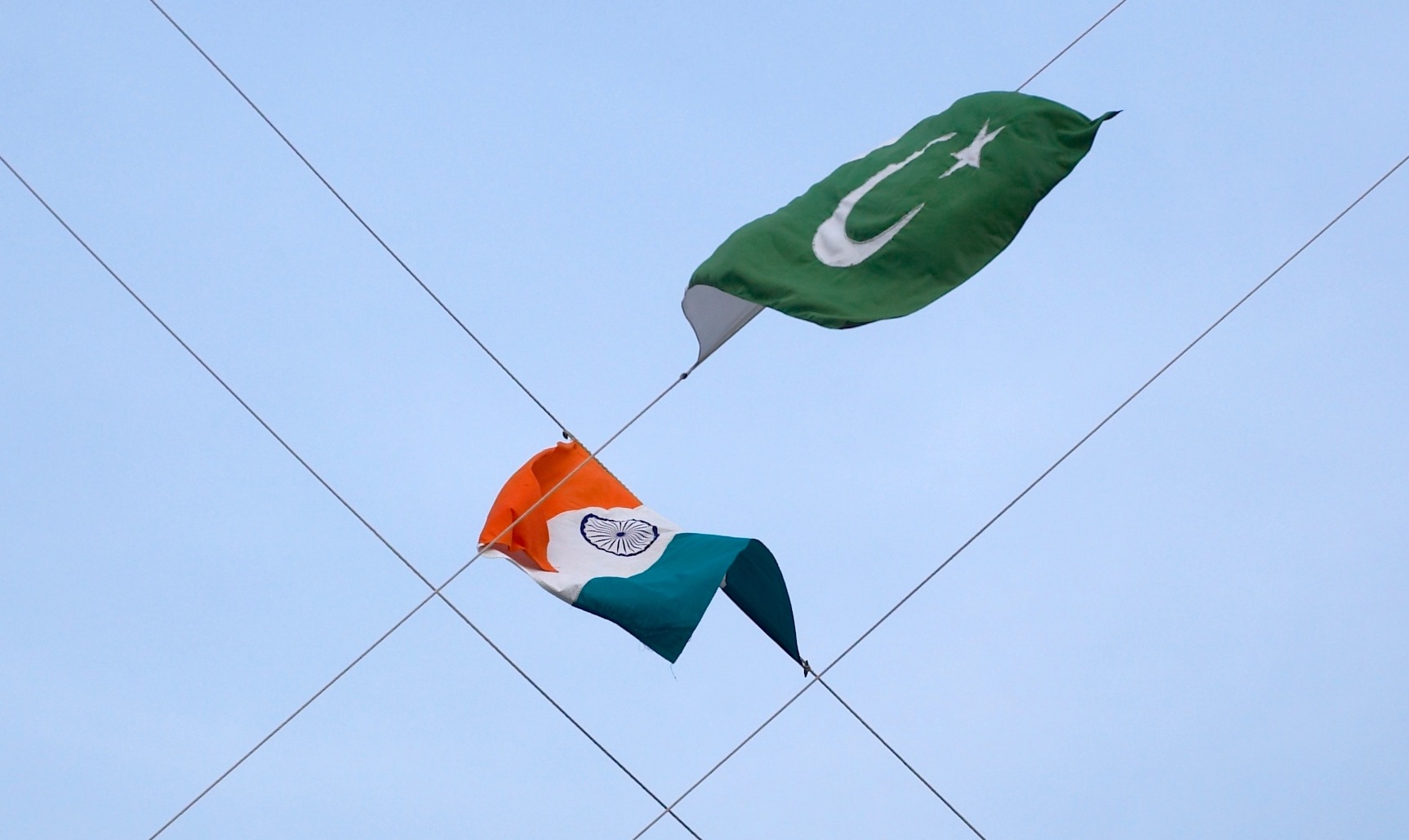Indian Missile Crisis: One Step from Nuclear War?
On 9 March 2022, India accidentally fired an unarmed BrahMos cruise missile that entered into Pakistan’s territory, crashing 500km away from the capital city of Islamabad. The flight-path endangered many international and domestic passenger flights both in Indian and Pakistani airspace, as well as human life and property on the ground.
India took two days to respond even after Pakistan’s repeated calls for clarification of the incident. Rather than accepting a joint inquiry, India opted for an internal inquiry into the incident. The Indian Ministry of Defence termed the incident as an “accidental launch” and under the investigation by an Indian Air Vice Marshal, a Group Captain was blamed for the incident. This incident highlights the urgent need for the major powers to address the issues between India and Pakistan in order to attain peace and stability in the region and beyond.
According to the 2017 Joint Doctrine for the Armed Forces, the authorisation of the launch of nuclear weapons can only be done by the Prime Minister who heads India’s Nuclear Command Authority (NCA). The launch order goes directly to the Indian Strategic Forces Command. Nevertheless, Vipin Narang states that, “the Prime Minister may not be able to release nuclear weapons without the National Security Adviser, who is the interface between the NCA and the Strategic Forces Command.” Critics within the Indian military have expressed doubt regarding India’s operational capacity saying the military is not adequately involved in nuclear decision-making.
The BrahMos missile that accidently landed in Pakistan was without a warhead, but what is notable is that the the concerned missile is dual-capable, that can also carry a nuclear warhead. When paired with the Su-30 aircraft, a highly maneuverable, fourth-generation multirole combat fighter aircraft, it creates a force multiplier which drastically expands the striking power of the air leg of India’s nuclear triad. An unauthorised launch of nuclear capable missiles is, however, not as simple as pressing a button. Agreed codes need to be sent over several separate communication channels to ensure that the officer in-charge can confirm if it is an authentic order.
The Indian Army has already inducted three regiments of BrahMos along the borders with Pakistan and China. A fourth BrahMos regiment has also been given a green light to be inducted. The BrahMos missile crisis of March 2022 also suggests that nuclear-capable Indian missiles are already deployed in launch on command positions vis-à-vis Pakistan. Also, given the Sino-Indian border confrontation in Ladakh since 2020, there is a very high probability that India has stationed nuclear capable missiles with longer ranges at the Sino-Indian border as well.
Given the reduced flight time between India and Pakistan, such deployments during future crises could further escalate the chances of miscalculations and misperceptions leading to catastrophic consequences. Hence, there needs to be a thorough investigation about the recent missile launch, to ascertain whether it was perpetrated by insiders through orders by those in the chain of command with access to the launch codes, or by outsiders, via a cyberattack for instance.
According to Zia Mian and MV Ramanna, the necessity of making a rapid transition possible from peacetime deployment to employable forces – as mandated by India’s nuclear doctrine – increases the risks of accidental and inadvertent escalation to nuclear exchange. Given the capability of the missile to carry both conventional and nuclear warheads, fighter jets equipped with BrahMos missile can be deployed in crises situations between India and Pakistan or India and China.
Another hypothesis is that India wanted to gauge Pakistan’s early warning systems, including air defences, and hence staged the the missile crisis. Many policymakers and academics have also hinted that India may be moving away from its No First Use Doctrine (NFU). India’s quest for a Ballistic Missile Defence system (BMD) is a case in point. Coupled with large missile inventory, the BMD could provide a false sense of security and tempt India to consider a disarming first strike against Pakistan in the future.
The current Indian BMD programme is, however, a rudimentary and small scale defensive system around New Delhi, which is in its initial phases of development. Similarly, the canisterisation of Agni missiles, where warheads are pre-mated with mobile launchers reflects Indian counterforce posture against Pakistan. As the missile is stored in mated form, it can be used for both launch-on-warning and also for striking preemptively.
Since 1998, Pakistan has repeatedly tabled the proposal for a South Asian Strategic Restraint Regime (SRR), which the Indian government has rejected time and again. Under the current Bharatiya Janata Party (BJP)-leadership, India has not responded to Pakistan’s offer for dialogue for many years.
The current Indian defence budget is USD 70.2 billion, but how much of it is dedicated to nuclear weapons, their delivery platforms and facilities, is not publicly known. The International Campaign to Abolish Nuclear Weapons (ICAN) estimates that, in 2020, India spent USD 2.48 billion on nuclear forces. This figure might not be accurate, however, because some of India’s military and civilian nuclear facilities still overlap under the authority of the Department of Atom Energy (DAE). In 2020, the estimated allocation to the DAE was USD 2.43 billion.
Similarly, in 2020, the allocation to Indian Defence Research and Development Organisation was estimated to be 2.47 billion. Moreover, the share of Army, Navy and Air force will also have budget allocated for nuclear weapons and delivery systems. India is increasing the ranges of it’s missiles with 1,0000 km range AGNI VI ICBM and 3500 km range K-4 SLBMs, shifting from liquid fuel missiles to solid fuel missiles, MIRVing of Agni-VI and canisterisation of Agni-V and Prahaar missiles, this reflects Indian plans for modernisation of its nuclear weapons and forces.
The flight time of missiles between India and Pakistan is so short that it is going to be very difficult to attain necessary reconnaissance for efficient interception of any incoming missile. The recent incident was salvaged because of Pakistan’s restraint. In the future, Pakistan cannot be expected to remain oblivious to its security concerns and the detrimental impact that Indian military and nuclear modernisation has on strategic stability in the region. A deliberate or accidental launch during heated tensions between India and Pakistan or India and China could start a nuclear war.
India may not have many incentives to show restraint and responsibility as it enjoys a certain special status as part of the US containment policy towards China. It also enjoys thirteen-plus nuclear deals as a result of 2005 India-US nuclear deal. India offers a huge market for major players like Russia and the United States, to fuel their military and nuclear industrial complex. Deterrence instability in South Asia will endanger not only the US Indo-Pacific strategy but also global peace and security.
About the Author
Anum A. Khan is an Associate Director at the Center for International Strategic Studies (CISS) Islamabad. She is also at the research team of the ERC funded project ‘The Third Nuclear Age.’ She has worked with Pakistan’s Strategic Plans Division as an International Relations Analyst at the Arms Control and Disarmament Affairs Branch. She is a visiting Ph.D. scholar at the School of History, Politics and International Relations at the University of Leicester, UK and is currently enrolled in Ph.D. program of Defence and Diplomatic Studies at Quaid-i-Azam University, Islamabad. She holds an M.Phil. Degree in Strategic and Nuclear Studies from National Defence University, Islamabad and BS (Hon’s) in Media and Communication Studies from International Islamic University, Islamabad. Her areas of interests include issues related to Deterrence and Strategic Stability, Non-Proliferation, Media and Perception Building vis-a-vis Nuclear Weapons, Nuclear Export Control Cartels including Nuclear Suppliers Group, Arms Control and Disarmament.
Disclaimer: The opinions articulated above represent the views of the author(s) and do not necessarily reflect the position of the Asia Pacific Leadership Network or any of its members. The APLN’s website is a source of authoritative research and analysis and serves as a platform for debate and discussion among our senior network members, experts and practitioners, as well as the next generation of policymakers, analysts and advocates. Comments and responses can be emailed to apln@apln.network.
Image: Wikimedia Commons




